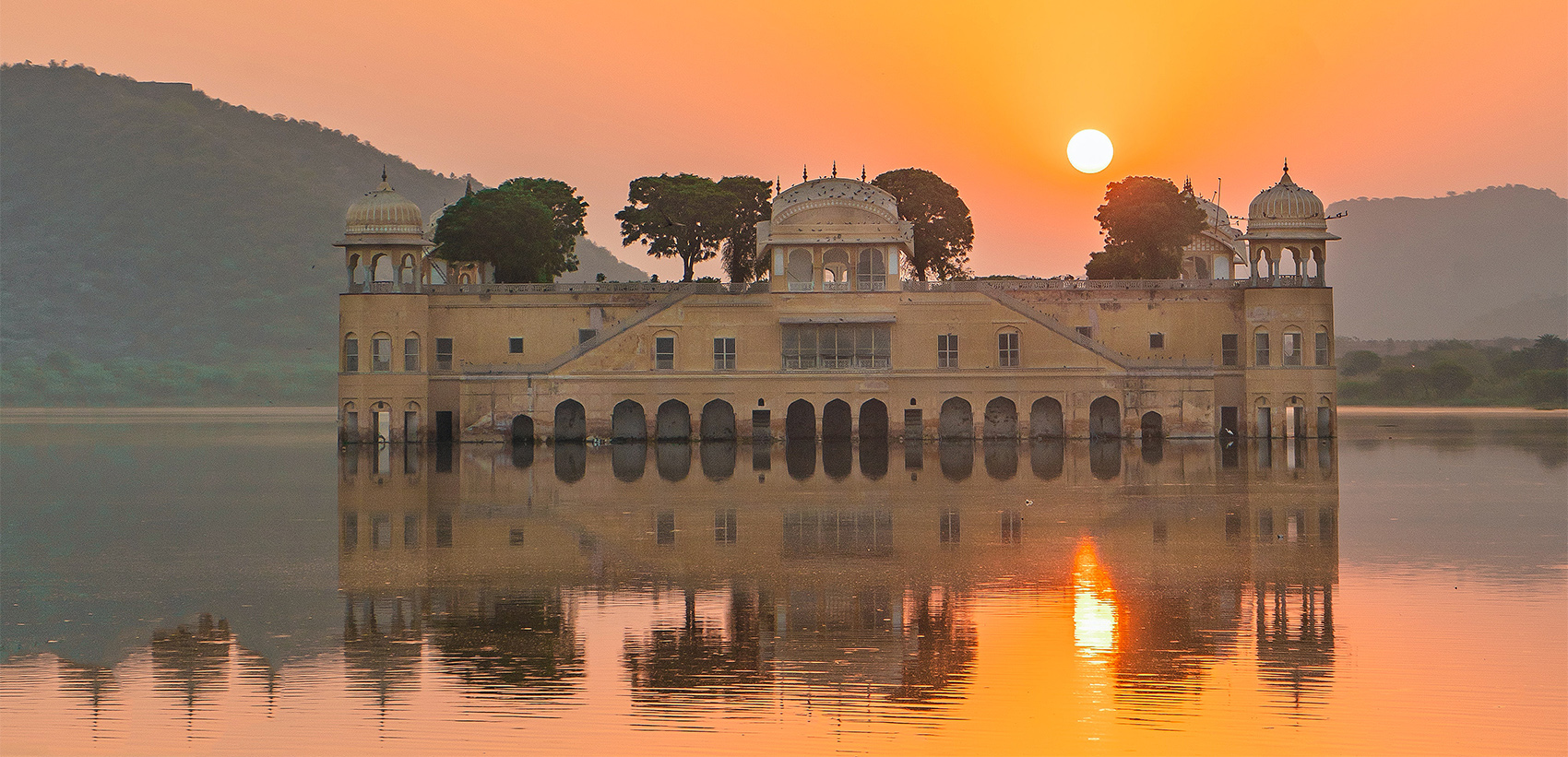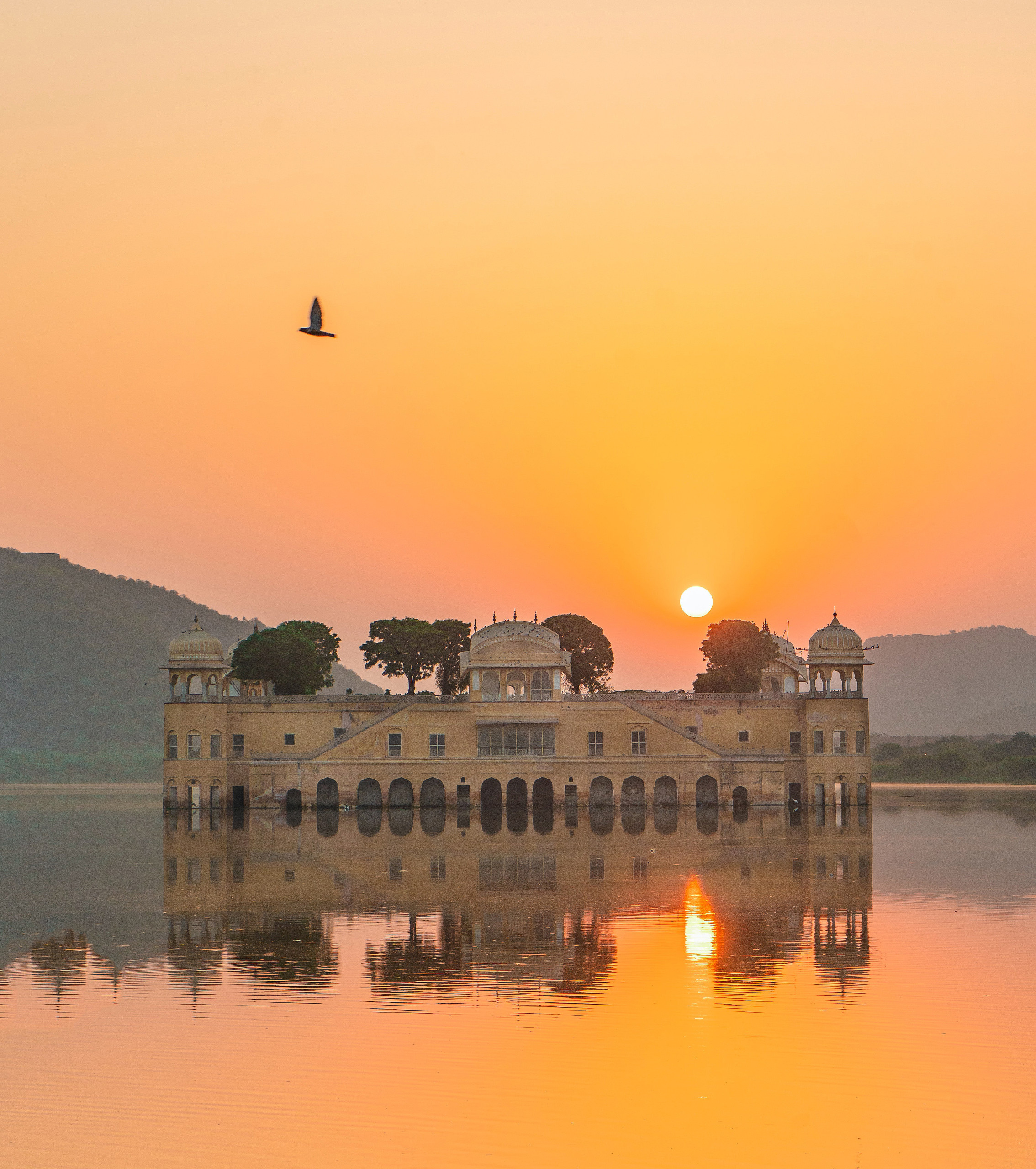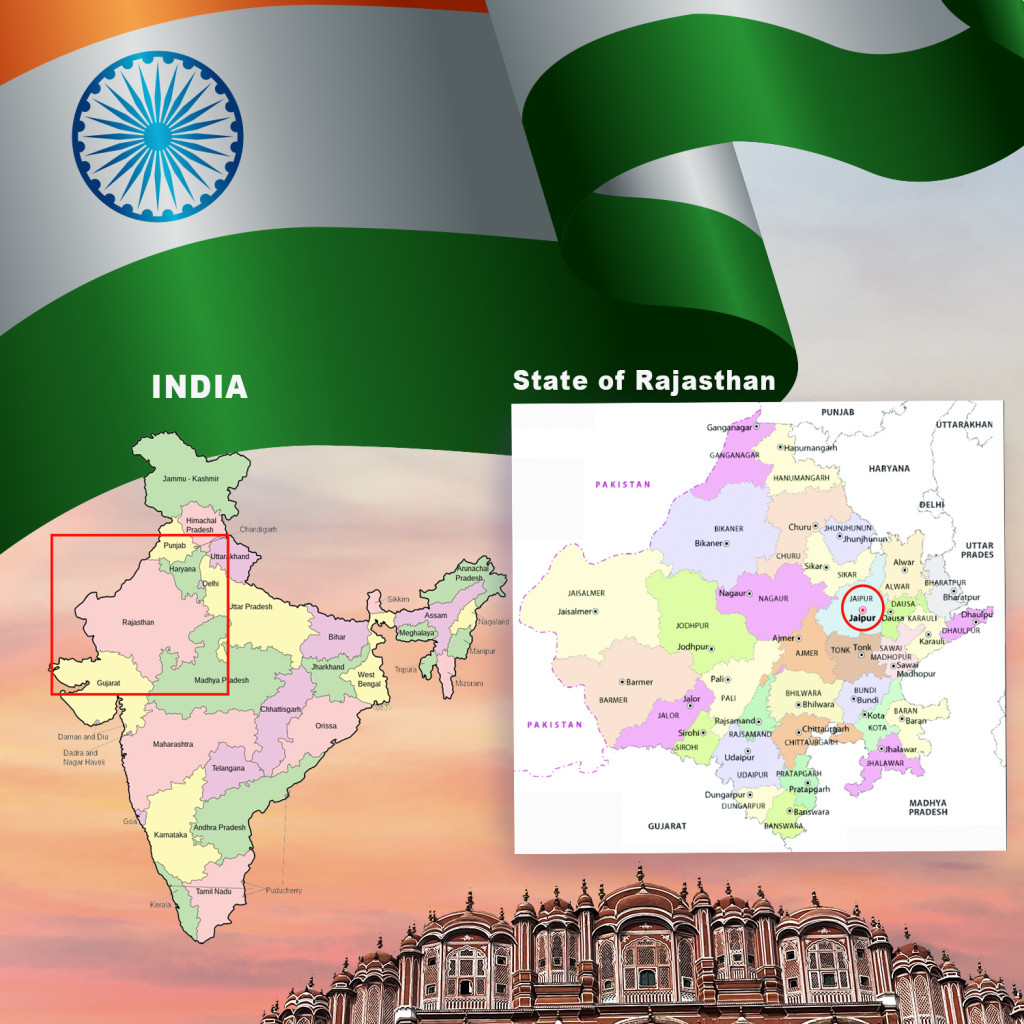About Jaipur


The Jal Mahal or “Water Palace, which rises out of the Man Sagar Lake in Jaipur. Originally constructed in 1699, before city’s construction, the building and the lake around it were renovated and enlarged in the 18th century by Jaipur’s founder Maharaja Sawai Jai Singh II. Four of its five floors are usually located underwater. (Photo by RJ Singh on Pexels.com)
Known as the Pink City, because of the characteristic burnt ochre colour of many of the buildings in its centre, Jaipur is the capital of the Indian state of Rajasthan. With more than 4 million residents, it is also its largest city.
It was founded by the King of Amber, Maharaja Sawai Jai Singh II, in 1727, and planned according to the principles of Vastu Shastra and Shilpa Shastra. Initial construction took four years to complete, with the architecture typical of the 17th century Mughal rule in northern India, and reminiscent of styles from around the Moslem world.
The original city was divided into nine blocks, two of which contained the state buildings and palaces, with the remaining seven allotted to the public. Huge ramparts were built, with entry allowed through seven fortified gates. In 1876, the old city’s buildings were painted pink, the traditional colour of hospitality, in honour of royal visit by Queen Victoria and the Prince of Wales
Jaipur is a major tourist destination in India, forming a part of the Golden Triangle, together with Agra, home to the Taj Mahal, and New Delhi, the country’s capital. In 2019, the UNESCO World Heritage Committee inscribed Jaipur as the “Pink City of India” among its World Heritage Sites. It is also home to the UNESCO World Heritage Sites Amer Fort and Jantar Mantar.
Jaipur’s association with the jewellery industry dates back to its very establishment. Skilled craftsmen, including jewellers and stonecutters, were brought to the city by Jai Singh II, and remained there under the patronage successive maharajas, creating an enamelling and gem-setting tradition that continues to this very day.

A map of modern-day India, with the State of Rajasthan inset on the right. The city of Jaipur is located within the red circle in the north-east. The building seen below is Jaipur’s iconic Hawa Mahul, or “Palace of Winds.”
The Johari Bazaar, one of Jaipur’s oldest markets, was already commissioned by Jai Singh II, and it is still home to numerous workshops and jewellery emporiums.
While it is difficult to determining the total number of people working in Jaipur’s gem and jewellery trade today, it is estimated that the number of people employed in established factories and the cottage industry, both in the city and surrounding areas, is between 200,000 and 300,000, with more than half of them involved in the gem cutting.
Today, a major portion of gem and jewellery production is centred in the Sitapura Special Economic Zone, which was developed by for the sector by the Rajasthan State Industrial Development & Industrial Corporation (RIICO).
The gemstone most associated with Jaipur is the emerald, and there is a close association with the growth of its industry and the rise to dominance of Zambia as source of rough supply. Jaipur also has been a major tanzanite cutting centre.

